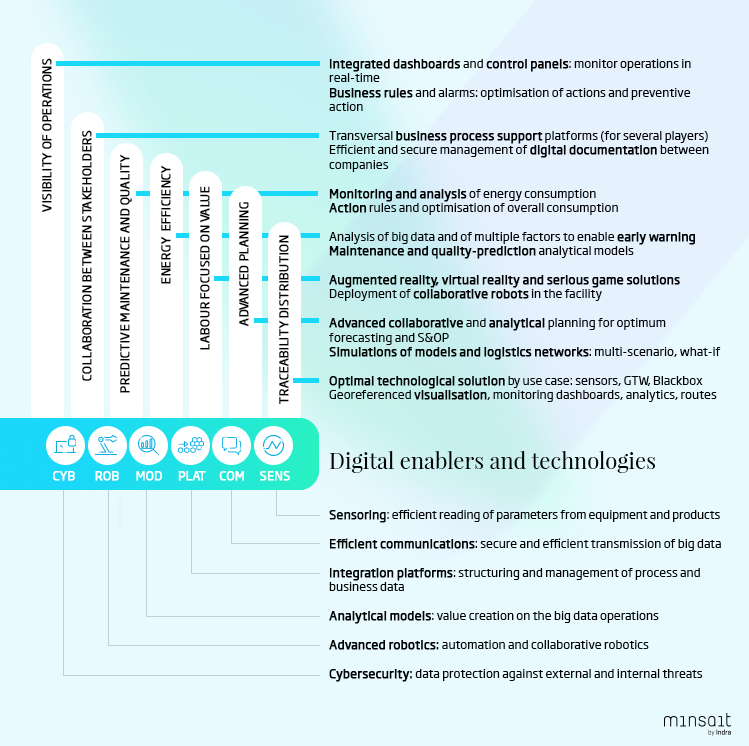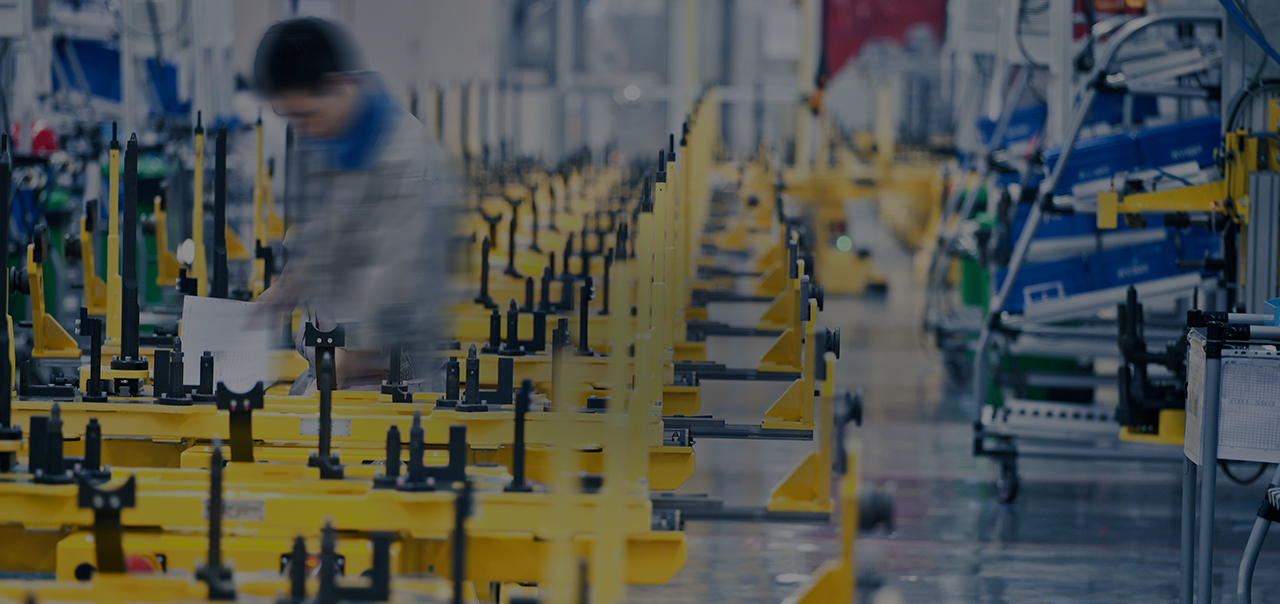What is Industry 4.0?
Industry 4.0 consists of the application of digital tools throughout the industry value chain to drastically transform operations and business models. The so-called fourth industrial revolution has been accelerated by the development of new technologies (cheaper and mature for mass application), increased storage capacity and data processing and the emergence of new business models.
The economic potential of digitisation in the industry worldwide is estimated to be around $1.2 - 3.7 trillion by 2025. In Europe, the potential is estimated at about €375-415 billion a year over the same period, and in Spain it is estimated at an additional GVA of €120 billion.
Beyond the quantification of the economic potential, the importance of this transformation comes from its deep impacts on technological, operational and strategic areas, which will allow companies to occupy new competitive positions and strengthen the importance of their national sector as a part of the global industry (eg, the European Commission has set the target of 20% for the industry's GDP in the EU as a whole for the year 2020, compared to around 15% in 2015).
What are the main digital enablers in the industry?
Industry 4.0 is being accelerated by the emergence and maturity of multiple digital enablers and technologies, with potential impact on industry and with direct applicability to several functional solutions.
This is summed up in the following diagram:

Digital technologies are making possible new breakthroughs in industrial competitiveness in many different domains: Traceability, Efficiency, Quality, Flexibility and Product Customization. Cutting-edge companies in different sectors are using digital solutions already to generate competitive advantages:
Supply chain optimization, traceability and control
A leading global company in the textile sector has an end-to-end traceability system based on RFID which tells it the precise location of each garment, optimising the supply chain and inventory, and providing knowledge on the behaviour of the customer in its stores, to be applied across the entire chain.
Analytics oriented towards impact:
predictive maintenance
An electricity and gas distributor has implemented a predictive maintenance solution for energy generation assets in one of its plants. The solution reduces maintenance costs, increases availability and service levels, and lengthens the life cycle of the assets.
Value-focused labour: augmented reality
A manufacturer of building infrastructure has provided augmented reality glasses to some of its technicians, giving them real-time access to lift maintenance resources. The glasses allow the technicians to identify the maintenance needs of each lift in real time, improve operations and provide a basis for advanced training environments.
Energy efficiency
An automotive firm has implemented an intelligent energy management system in one of its plants that allows it to monitor energy consumption in production lines and to optimise costs. As well, there is an autonomous electricity generation system taking advantage of solar energy to provide for the plant's needs.
What five digital solutions will mark the transformation of Industry 4.0 in the short-term?
With respect to their future adoption, the digital enablers that are the base for the digitisation of industry are in different states of maturity, in terms of functionality, robustness and cost of massive scalability.
Furthermore, it is necessary to consider the average starting point for the industrial fabric and, above all, to identify the technology use cases which have the greatest potential short-term impact on business.
Thus, it is important to distinguish between those technologies that, for the moment, have more restrictive use cases (eg, 3D printing) and those with more extended applicability and greater impact potential in the short term (eg, advanced big data analytics).
Considering all this, we at Minsait believe there are five major digital solutions that will mark the development of the digital transformation of the industry in the short term:


